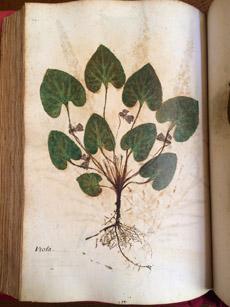Dominic Olariu's research investigated Western herbals and nature printings from the fourteenth century onwards, with an emphasis on the period of the fourteenth to sixteenth centuries. Herbal and animal prints do occur in the quattrocento, although an isolated example is known from the thirteenth century. The analyzed nature prints are the oldest manuscripts of their kind. Currently, ten herbal manuscripts containing mainly nature prints on paper may be identified worldwide. Scattered prints of plants and leaves are known to exist in manuscripts from the fifteenth century and onwards. The corpus of the nature prints illustrations, likely to be enlarged by further discoveries, is homogenous, although the herbals originate both from Italy and Germany. Similar to painted herbals, all manuscripts contain illustrations yet scarce textual information. The production technique of the prints is a very sophisticated one and unique for its time: plants have been swabbed with ink or paint and pressed onto sheets of paper. The uniqueness of the procedure is increased by the fact that two or sometimes even three prints have been superposed in order to produce, in most of the manuscripts, multicolor impressions. On the one hand, the nature prints must be understood as a reaction to updated knowledge on antique herbals and phytology. On the other hand, they are an adaptation of the invention of the printing press and its visual modalities. The herbals of the fifteenth and sixteenth centuries, both painted and printed, are situated between science and art and influenced both of these domains.

